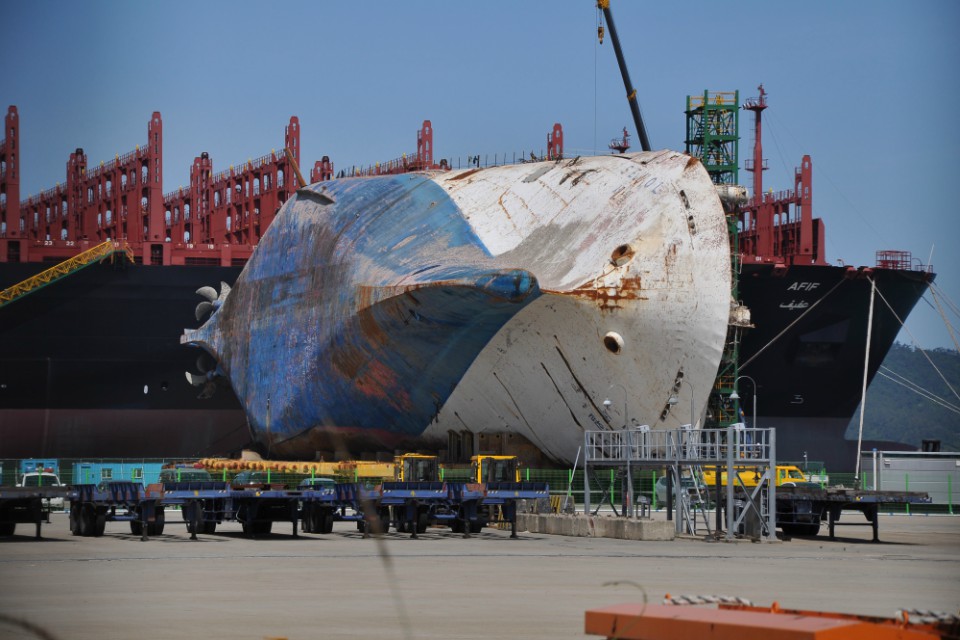
Salvaged. But Not Saved
Can there ever be complete closure for those who lose their loved ones? Perhaps “closure” is a rationale we force upon ourselves and others, so we can make the motion of closing one chapter and moving onto the next. But in reality, the next chapter is never so cleanly divided from the darkness of the past. The Sewol has been salvaged, but not saved. What’s lost is lost, and the wounds still run deep and vivid in South Korean society.
Nearly two months have passed since the infamous ferry made its way back to land. The sight of the rusty ship made headlines all across South Korea. The ferry, which took 304 lives, mostly high school students, sank on the morning of Apr. 16, 2014. It was salvaged after three years, following bitter political battles and even the ouster of the president.
[ngg_images gallery_ids=”20″ display_type=”ds-nextgen_royalslider”]
For the past three years, it had been one thing to talk about all those deaths, the salvaging and the missing bodies, while the Sewol lay at the bottom of the sea, distant and abstract. It was another to see the actual object. The vessel was eerily and uncomfortably similar to its appearance on the day of the sinking, which was broadcast live, but most of the crew and passengers, who had been alive on that morning, were gone. The ship was a cruel reminder that the only thing that could really be physically salvaged was the vessel that had taken away the lives.
After more than a month of post-salvage search, conducted by the Ministry of Oceans and Fisheries, four bodies out of the nine missing have been found. These remains are at the heart of the salvaging process; the biggest question that many are asking is, will all of them be found? Will recovering the bodies of the missing give proper closure, whatever that means, to their families?
The ministry says it plans to finish the search process by the end of June.
Many South Koreans are heading down to Mokpo New Port, at the southwestern tip of the Korean Peninsula, to pay their respects to the dead. Visitors click away on their smartphones while the ship lies on its side (there are no land-based cranes in South Korea big enough to set it upright).
Now, the ship’s owner — the deceased Yoo Byung-eun, CEO of the company that operated the Sewol — is back in the headlines again. His daughter has been extradited from France to South Korea and will be charged for embezzlement. Perhaps this will give the South Korean public a fleeting sense of gratification, that any and all corrupt authorities somehow related to this ferry disaster will meet the rightful retribution.
Photographs and additional reporting by Daniel Corks.
Cover image: The infamous ferry, salvaged in April, is now in Mokpo’s New Port. (Daniel Corks/Korea Exposé)
*
Read more of our Sewol coverage since 2014:
- 1000 Days of Anguish: Families of the Missing Sewol Passengers (2017)
- With the Sewol’s Salvage, Closure May Be Near (2017)
- Politics of the Yellow “Sewol” Ribbon (2017)
- The Sewol Generation: Young South Koreans Open Their Eyes to Politics (2016)
- Sewol Salvage and Investigation: Where They Stand (2016)
- Why Sewol Families Still Fight (2015)
- Kim Young-oh: The Emergence of a Reluctant Icon (2014)

